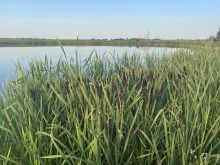Provincial officials are encouraging Alberta’s beef producers to carefully assess their soil moisture situation this year and take steps early to ensure adequate grass supplies.
Ralph Wright, Alberta Agriculture’s soil moisture specialist, said soil moisture levels are extremely low in many parts of Alberta.
Without significant rainfall this spring, many areas will face drought conditions similar to what they experienced last year.
“We’re much drier than this time last year,” Wright said in a recent edition of Agri-News, a weekly bulletin published by the department.
Read Also

Europe holds promise for Canadian lentils
Pulse Canada is trying to help boost lentil consumption in Europe, which is already the fourth largest market.
“Extremely low soil moisture, typically seen once in 12 to 25 years on average, is being recorded across large areas of Alberta. That extreme dry soil zone is four times larger than this time last year.”
Wright said many areas of Alberta have received less precipitation than normal over the past decade, and last year’s drought further depleted soil moisture reserves.
Most of Alberta did not receive sufficient precipitation to recharge moisture reserves before freeze-up last fall.
Alberta’s 2009 growing season was extremely dry, and snowfall this winter has also been below average.
In a normal year, 25 percent of Alberta’s annual precipitation comes in the form of snowfall between November and March.
Average monthly precipitation in that period is normally 10 to 20 millimetres. By comparison, an average of 90 to 100 mm normally falls in June and July, the province’s wettest months.
“The late summer and early fall are typically very important for soil moisture recharge, but (last year) we just didn’t get a lot of precipitation in the fall,” Wright said.
“In many areas, the pasture is suffering.… Plenty of spring rain will be needed to replenish dry soils and avoid a repeat of last year when drought conditions across much of the province crippled pasture and hay production.”
Grant Lastiwka, a grazing and forage specialist with Alberta Agriculture, said beef producers are facing a serious situation that will require careful planning and good pasture management.
“No matter how much rain or snow melt we get this spring, producers in areas with low soil moisture should probably expect lower hay and pasture yields and definitely a delayed start to the grazing season, at least a month later than usual in the driest areas,” Lastiwka said.
“Plenty of rain will be critical, but prolonged dry soil conditions mean these plants are stressed and may take twice as long as healthy plants to grow.”
Lastiwka said producers should calculate their feed requirements carefully and expend feed reserves.
A later start to spring grazing will force producers to feed cattle longer.
Turning cattle onto pastures too early will place additional stress on already damaged rangeland and could have costly long-term consequences.
Forage plants’ root systems and energy reserves have already been compromised in many parts of the province, Lastiwka said.
In some cases, damage was compounded by producers who had tight feed supplies and were forced to make hard choices.
Some producers overgrazed pastures while others cut back on fertilizer.
“Producers need to plan now for a later start to grazing, the risk of lower yields and the possibility of another dry spring,” Lastiwka said.
Strategies include reducing herd size, renting additional pasture and fertilizing forage stands.
Producers can check out soil moisture reserves on pastures at www.agric.gov.ab.ca/app116/quick.jsp by clicking on soil moisture, pasture and reserves relative to normal.















